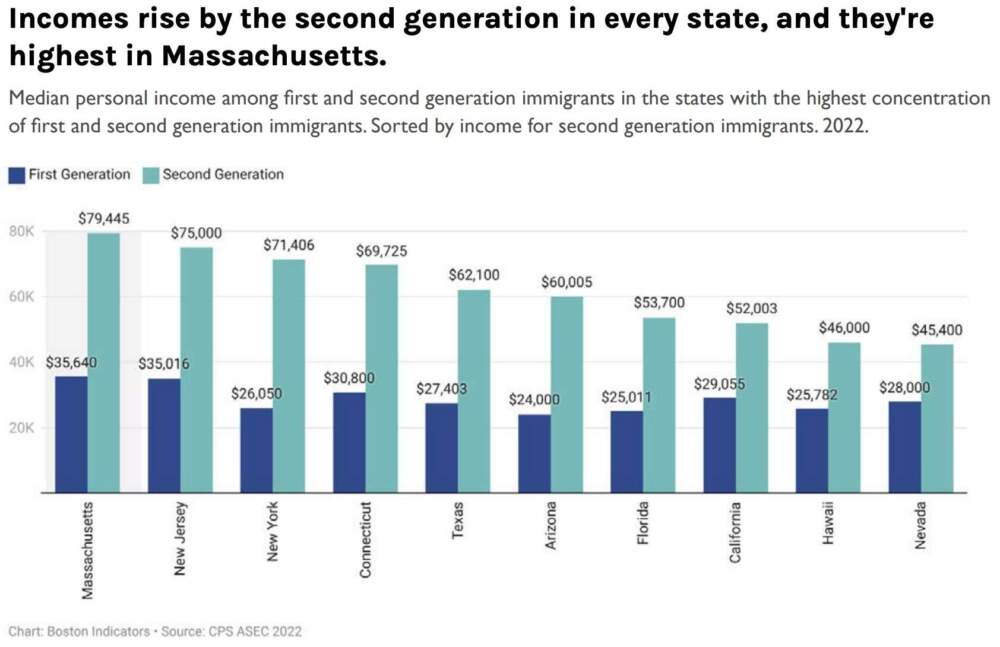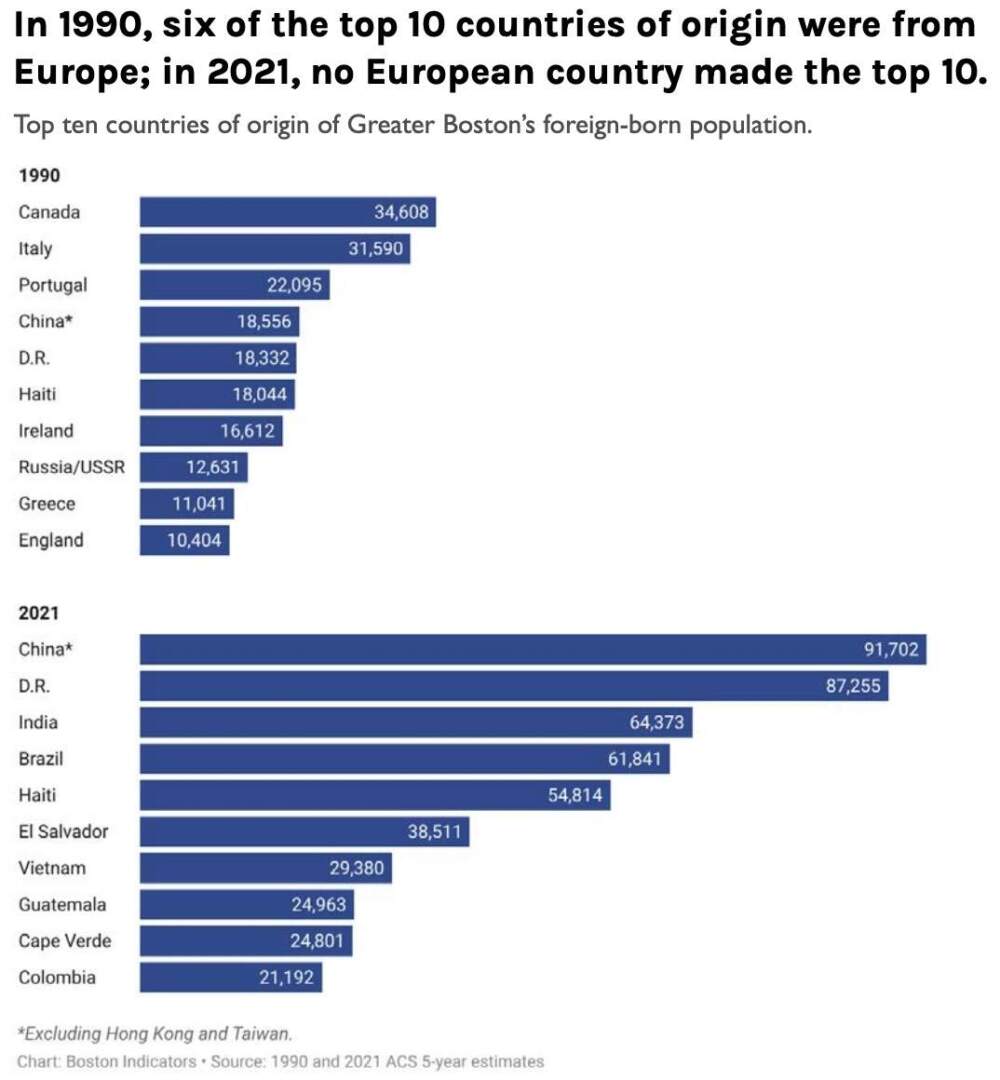Advertisement
Report: Immigrants contribute more than $100 billion annually to Greater Boston economy
Greater Boston's diverse immigrant population plays an outsized role in the region's economy, according to a new report released Wednesday by Boston Indicators.
The report, done in partnership with the Immigration Research Initiative, examines the make up of the region's immigrant population and their economic impact. Here are a few takeaways from the report:
Immigrants contribute $103 billion annually to the region
Immigrants in Greater Boston contribute $103 billion every year to the region's economy, the report found. Their economic contributions also represent more than their share of the population. They make up 21% of the population, but 25% of the labor market and 28% of business owners, according to the report.
The report found immigrants own an even higher portion — 40% — of "Main Street" businesses in Greater Boston, including more than half of all restaurants, 61% of nail salons and 86% of convenience stores.
"They're extremely entrepreneurial and they've been fueling the revitalization of many of our local downtowns across the region," said Luc Schuster, executive director of Boston Indicators, the research arm of the Boston Foundation.

Greater Boston immigrants have the highest economic mobility in the U.S.
Immigrants in Greater Boston have a range of education levels and work across a variety of sectors, including in low-, middle- and high-wage jobs. While immigrants are more likely than those born in the U.S. to work low-wage jobs, the report found 61% of immigrants in the region work in middle- or high-wage jobs. That includes jobs in the tech, business and medical fields.
In all, 38% of immigrants work low-wage jobs, which the report defined as earning a median annual wage of $49,000. The report noted these immigrants tend to face more obstacles with language, foreign credentials and immigration status.
Race and gender also impact economic outcomes. The report found white and Asian/Pacific Islander men are more likely to earn middle to high wages, while Black and Latino women are more likely to earn low wages. There are also differences within immigrant groups. For example, the report noted, median incomes for Asian immigrants ranged from $58,705 for Nepali residents to $128,552 for Indian residents in Greater Boston in 2018.
Still, immigrants have remarkable rates of economic mobility, Schuster said. The median wage tends to be $50,000 for those who have been in the U.S. less than five years, climbing to closer to $60,000 after 10 years and nearing $70,000 after 20 years, according to the report. Economic gains are even more pronounced from first- to second-generation.
"Incomes increase very quickly in the early years of an individual's working career here, but then also incomes increased really significantly across the generations, with the kids of immigrants often doing far better economically than native-born residents," Schuster said.
According to the report, the median income for a second-generation immigrant was $79,445 in 2022 compared to just $35,640 for first-generation immigrants. This dynamic is true nationwide, but the data show "the magnitude of that economic mobility is even greater in Greater Boston than it is in the rest of the country," Schuster said. This difference between first- and second generation immigrant incomes is often the largest of any demographic in the country, according to a previous Boston Indicator report.

The largest group of new arrivals are from China, the Dominican Republic, India, Brazil and Haiti
The report also examined how the region's immigrant population has grown more diverse over time. Up until 1990, six European countries made up the top 10 countries of origin. But by 2021, no European country made the top 10, the report found. The largest groups of recent arrivals come from China, the Dominican Republic, India, Brazil and Haiti, according to the report.
The region also has a more global spread of immigrants compared to the rest of the nation. For example, recent arrivals from Mexico make up the largest share of immigrants in the U.S. at 24%. But in Greater Boston, Mexican immigrants only make up 1% of the immigrant population, according to the report. The region also has significant populations of some groups — such as Cape Verdeans and Brazilians — who have much less representation in other parts of the country.

Schuster said the region's economy and clusters of immigrant groups — who are increasingly moving to suburbs due to high housing costs in Boston proper — help attract a wider range of people from other countries.
"Part of it is just our local economy is especially welcoming of higher skill workers who are more likely to be coming on things like an H-1B visa," Schuster said, referencing specialized work permits. "But, we also just over time have become home to a range of different ethnic enclaves."
Immigration has also helped offset population losses from longer-standing residents moving out of the region over the last decade, the report noted.
